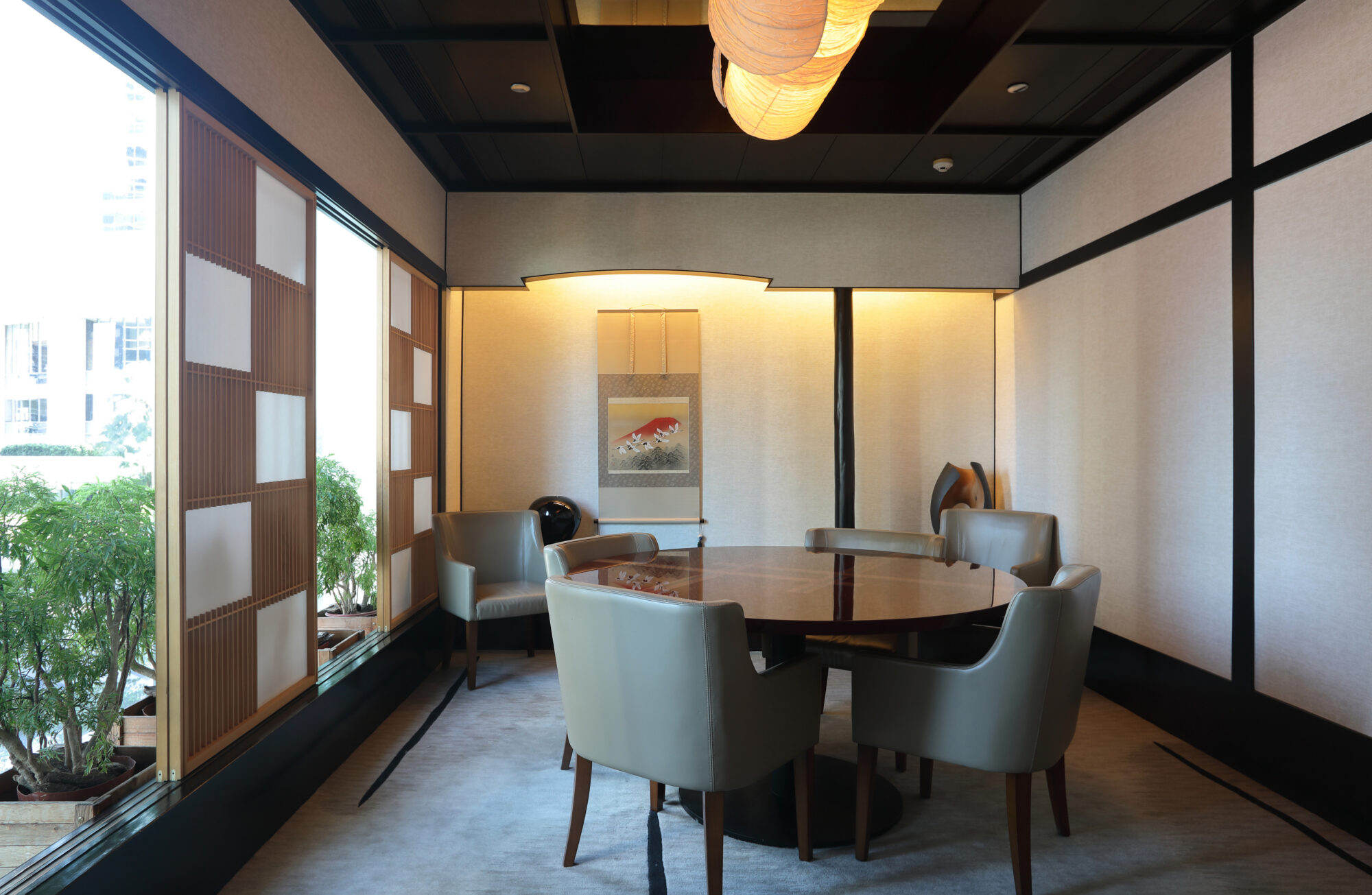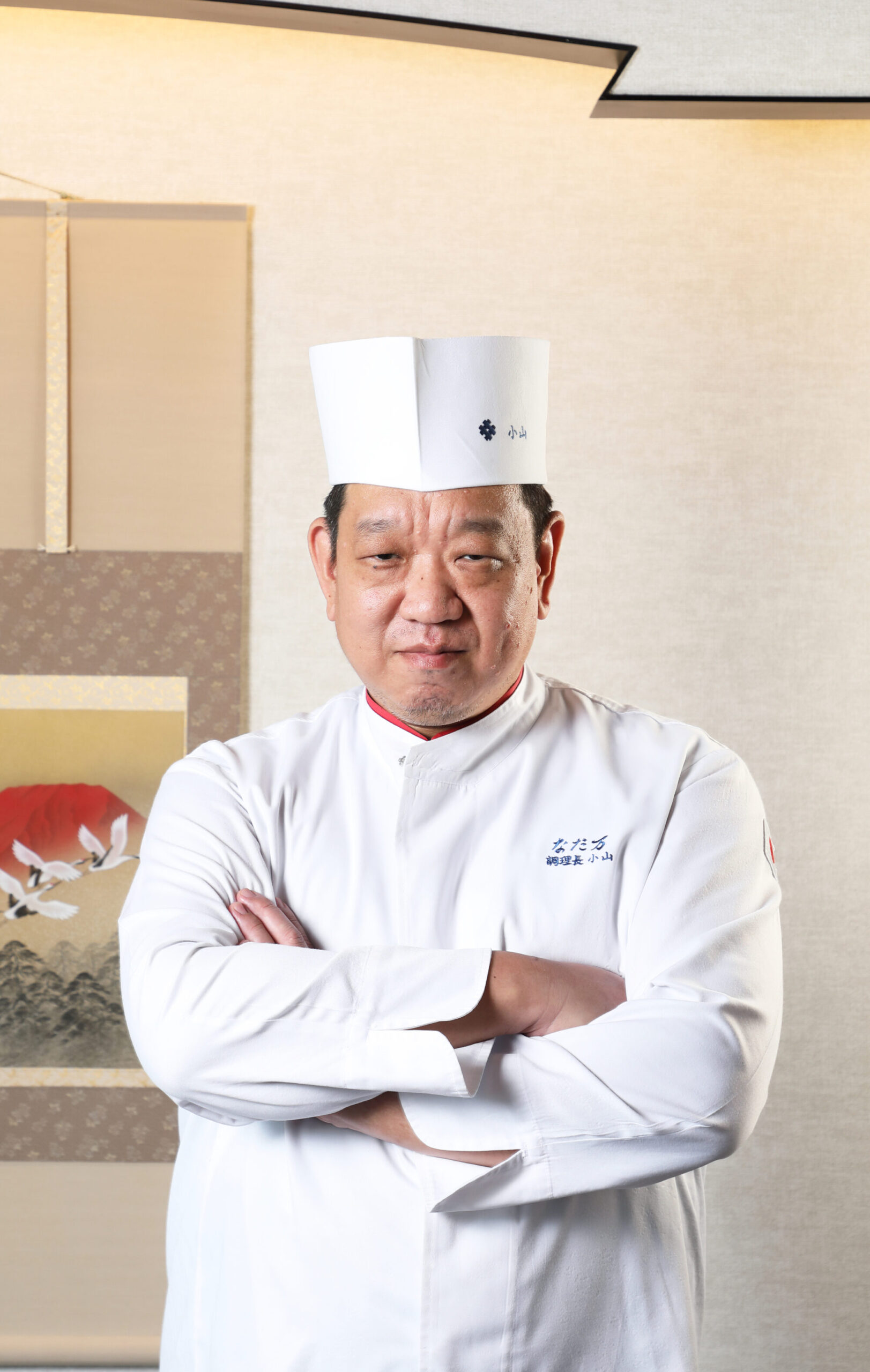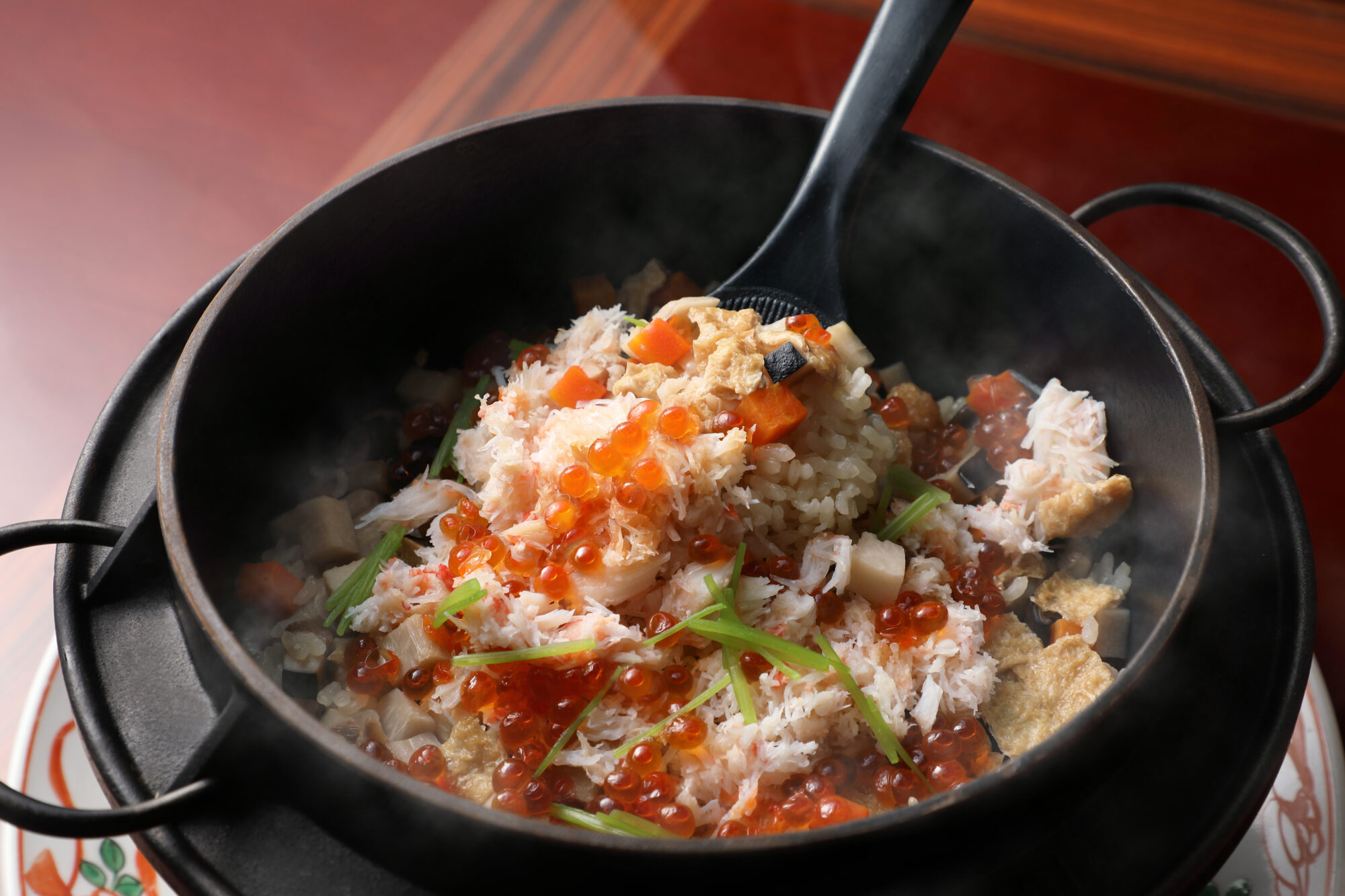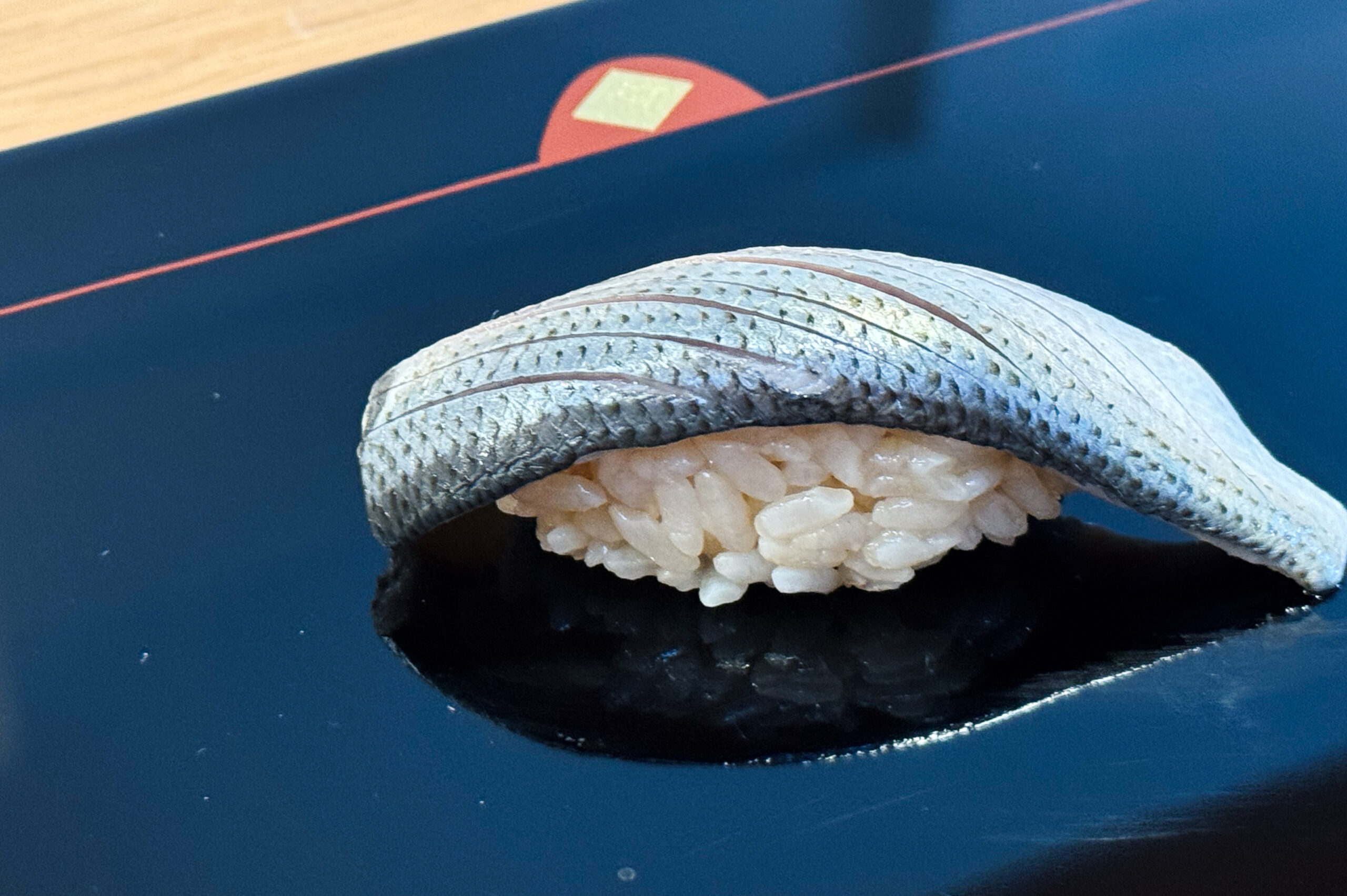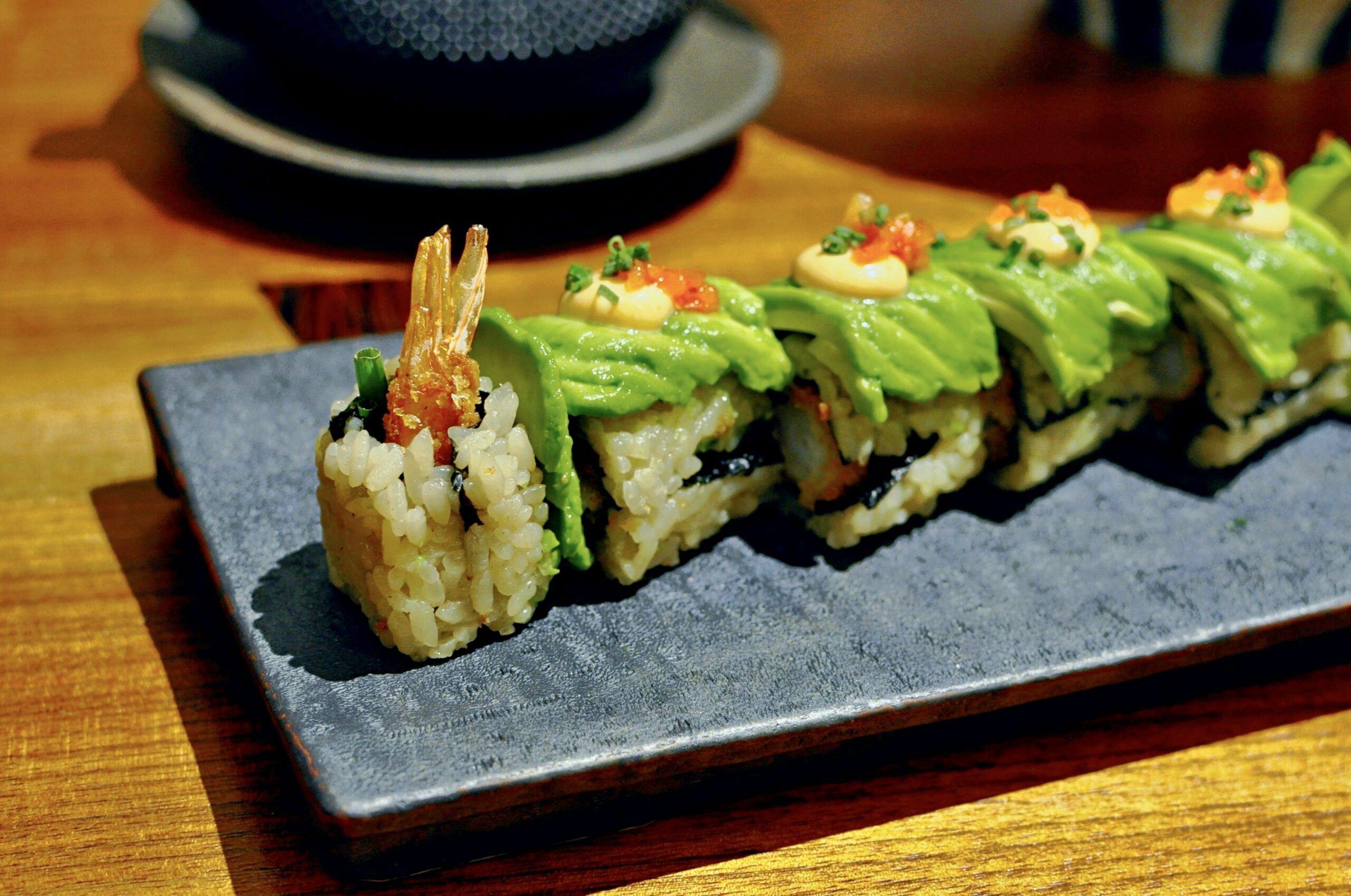
What inspired you to become a chef?
My father owned a restaurant where he was the chef, and my mother helped run the place. We lived above the restaurant, so I grew up in a culinary environment. My father’s cooking was so delicious that it made me want to become a chef myself.
After graduating from cooking school, I joined NADAMAN, beginning my career as a chef. The chef that first looked after me went on to become the first head chef of Hong Kong Island NADAMAN. He taught me for 15 years, and now I’ve followed in his steps to become head chef of this branch. To come to think of it, it is quite moving.

Meeting Demand for Authentic Japanese Food with Japanese Rice
Please tell us about the rice you use in your restaurant.
We use the Yumegokochi brand grown in the Yamagata prefecture. It has good texture, shine, sweetness, and maintains its taste even when cooled. The farmers who grow this rice put much effort into nurturing the soil. They add seaweed extract and honey to the soil, preparing the soil for three to four years before planting the rice.
In addition to Yumegokochi, we use the Akidawara brand for sushi and teppanyaki (iron grill) dishes. This brand has less stickiness which results in a lighter taste. We tried numerous brands before settling down to the two brands I just mentioned.
Our guests at NADAMAN are mainly westerners and locals, while Japanese people only make up about 20 percent. We are located in the business district of Admiralty. We have many financial workers who enjoy their lunch here and use our restaurant to treat their clients at night. These guests have a refined palate and prefer authentic Japanese cuisine. Serving safe food is just as important as satisfying their taste buds. That pretty much limits our choices to Japanese-grown rice. We trade directly with the producers, so we can deliver trustworthy ingredients.
What differences are there between the rice dishes of Hong Kong and Japan?
There are many dishes in Hong Kong that use rice, but they are quite different from Japanese cuisine. For instance, this hotel has seven food establishments, including two Chinese, but we are the only one that uses an iron pot for cooking rice.
In the Chinese restaurants, they use steamers to steam their rice for about an hour. That results in flaky rice with little stickiness. Hongkongers tend to prefer such rice.
White rice is also rarely eaten by itself, as it is preferred to combine rice with strongly flavored ingredients, in a manner like fried rice. It is common to enjoy rice and other ingredients as a set. The same can be said for onigiri (rice ball), which is also preferred with fillings like mentaiko (spicy pollock roe) or to be grilled with soy sauce, both resulting in a strong flavor.
Hongkongers also don’t seem to prefer eating cold food. We Japanese have ways to enjoy rice even when cooled, but Hongkongers tend to reheat cold rice or remake them into other dishes, like porridge.


Paying Heed to Small Details to Bring Out the True Taste of Japanese Rice
What do you focus on when preparing your rice?
We used to put emphasis on the quality of the water, but we have realized that the methods for preparing rice—such as rinsing and soaking—are far more important. Insufficient rinsing will compromise taste, but too much rinsing will crumble the grains. The amount of water adequate for soaking depends on whether the rice is new or old. That is why we test cook new rice before serving it to our guests to determine the best methods for the rice of that year.
We serve kamameshi (rice pot) using the seasonal ingredients of each month. This month, we have kamameshi using crab and winter vegetables. The rice is the Yumegokochi brand from Yamagata prefecture.

We prepare the rice in the same way for both onigiri and kamameshi. But there is a final step for kamameshi in which we combine the rice with simmered ingredients and cook on high heat for 10 seconds to create scorches. After scorching, we turn off the fire and let it sit and steam for 10 minutes. When serving, we have our guests observe the pot before we mix the ingredients together. It is crucial to be able to time our cooking for the best taste and presentation; and using an iron pot is essential for this. We use iron pots made in the Iwate prefecture. These pots have good heat retention—resulting in good steaming—and can be timed reliably. After comparing earthenware, copper, and iron pots, we have decided to use iron pots for our nighttime servings.

The seaweed we use with rice is made to order. When freshly cooked rice is wrapped with seaweed to make onigiri, the seaweed gets soggy from the rice’s steam. To prevent this, we have our seaweed made thicker than normal so that it maintains its crisp. Further, by making the shreds smaller than normal, the seaweed is easily chewed apart even after soaking up steam. We once received a complaint regarding seaweed that it was hard to chew apart because it had been soaked. In response to this, we experimented with the producers to solve this issue.

How do you store your rice?
The rice is stored at the mill, and we receive a daily shipment of freshly polished rice. We only store rice in our kitchen on Sundays when the mill is closed. Japanese ingredients are readily available in Hong Kong, and we have many partners contributing to a supportive business environment.
Please tell us about your future plans.
We wish to continue reinforcing our ties with our producers. We will visit the regions where our ingredients are produced, meet our producers, listen to their stories, and deliver their voices to our customers. Not only do these ties optimize logistics, but it also gives us chances to discover local ingredients that are not widely known. We believe there are many attractive local ingredients yet to be discovered. Just the other day, we made a new discovery in the Kagoshima prefecture. Another merit is that by delivering our producers’ voices to our guests, we can enhance their dining experience. Being the chef, it is easy for me to express my dedication to our guests, and I wish to give our producers the same opportunity. I believe Japanese cuisine is very reflective of the passion that goes into Japanese agriculture.
We were amazed at the amount of effort that Chef Koyama puts into serving Japanese rice. He has shown great passion for pursuing the best ingredients by strengthening ties with producers, combating issues through co-development, and constantly seeking new ingredients. Chef Koyama asserts that Japanese-grown rice is the only option. He states that this will be as long as the Japanese spirit for agriculture stays strong.
NADAMAN states that “A long-standing restaurant is always new.” This reflects their stance of maintaining tradition all the while pursuing novelty and freshness. Chef Koyama’s dedication to Japanese rice and his efforts to discovering new tastes are truly reflective of NADAMAN’s philosophy. Delivering delicious Japanese rice is the embodiment of the dedication that goes into maintaining a long-established enterprise.
Tips for Cooking Rice
Rinsing is a crucial step in cooking rice. You know you are done when the water begins to run clear. To make sure the rice does not soak up excess water, make sure to drain all the rinsing water when done.

Tips for Enjoying Rice
When making onigiri, apply salt water to your hands. This will enhance the flavor by mildly coating the onigiri with salt. I personally think that the more the filling the better.
